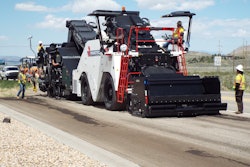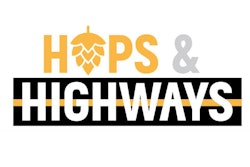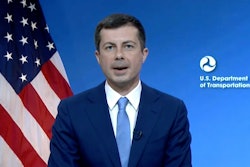
As a result of dwindling gas tax revenues during the Coronavirus pandemic, states have delayed or cancelled more than $12 billion in projects. The U.S. Department of the Treasury issued an interim final rule on permissible uses of $350 billion in state and local aid included in the recent American Rescue Plan Act (ARPA).The move will allow use of this relief money for certain state and local transportation projects, among other purposes.
AASHTO’s transportation policy team noted that the fact sheet Treasury issued with its interim final rule – specifically on page 60 – conforms to the request that these funds may be used on transportation infrastructure projects.
“Sections 602(c)(1)(C) and 603(c)(1)(C) of the Act provide recipients with broad latitude to use the Fiscal Recovery Funds for the provision of government services,” Treasury said in its guidance. “Government services can include, but are not limited to, maintenance or pay-go funded building of infrastructure, including roads; modernization of cybersecurity, including hardware, software, and protection of critical infrastructure; health services; environmental remediation; school or educational services; and the provision of police, fire, and other public safety services.”
By making the $350 billion eligible for infrastructure improvements, states and localities will have more flexibility to get transportation construction projects back on track and add more as a one-time stimulus.
The Details
Congress has allocated Coronavirus State and Local Fiscal Recovery Funds to tens of thousands of eligible state, local, territorial, and Tribal governments. According to the U.S. Department of Treasury website, the money will provide a substantial infusion of resources to meet pandemic response needs and rebuild a stronger and more equitable economy as the country recovers. Recipients may use these funds to:
- Support public health expenditures, by, for example, funding COVID-19 mitigation efforts, medical expenses, behavioral healthcare, and certain public health and safety staff
- Address negative economic impacts caused by the public health emergency, including economic harms to workers, households, small businesses, impacted industries, and the public sector
- Replace lost public sector revenue, using this funding to provide government services to the extent of the reduction in revenue experienced due to the pandemic
- Provide premium pay for essential workers, offering additional support to those who have and will bear the greatest health risks because of their service in critical infrastructure sectors
- Invest in water, sewer, and broadband infrastructure, making necessary investments to improve access to clean drinking water, support vital wastewater and stormwater infrastructure, and to expand access to broadband internet
Within these overall categories, recipients have broad flexibility to decide how best to use this funding to meet the needs of their communities
The allocations include:
States & District of Columbia: $195.3 billion
Counties: $65.1 billion
Metropolitan Cites: $45.6 billion
Tribal Governments: $20.0 billion
Territories: $4.5 billion
Non-Entitlement Units of Local Government: $19.5 billion
Treasury will distribute funds to eligible state, territorial, metropolitan city, county, and Tribal governments. You can request funding here.




















